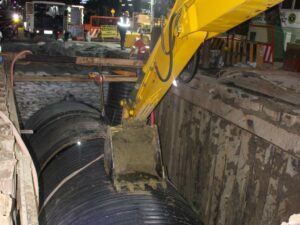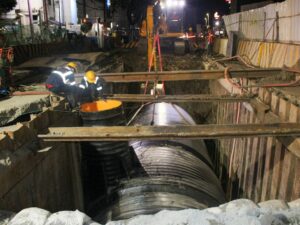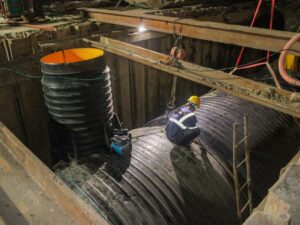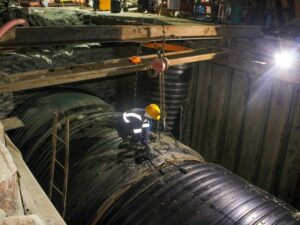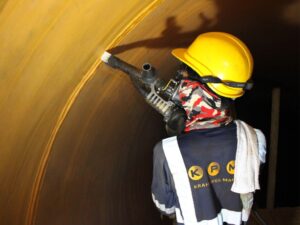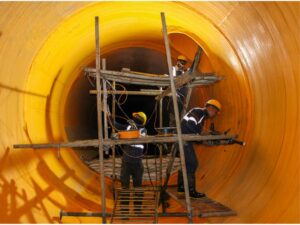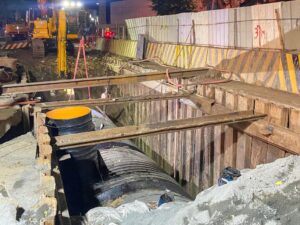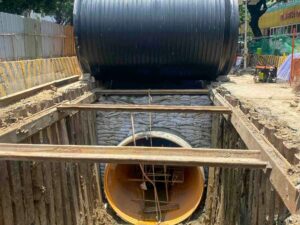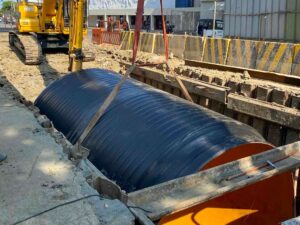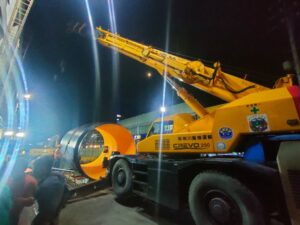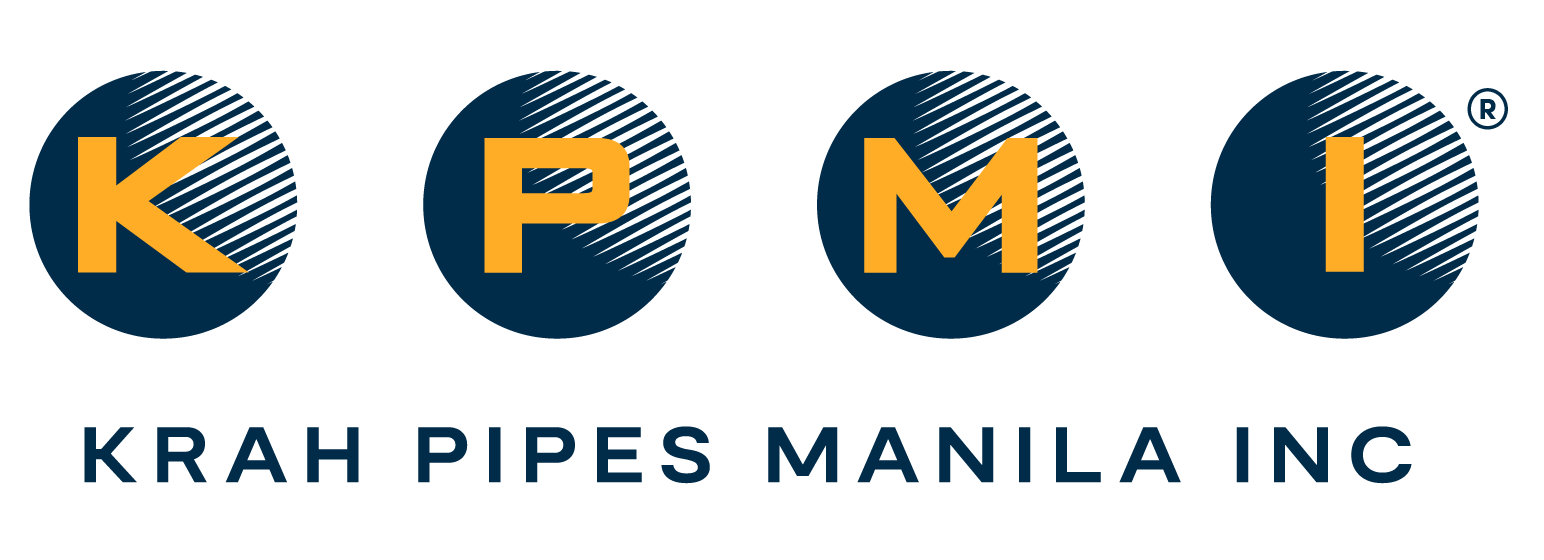DPWH - Construction of Drainage System Along Sumulong Highway Including Laterals (Phase III)
The Marikina-Sumulong Drainage Project is designed to significantly mitigate flooding issues in the cities of Marikina and Sumulong. By enhancing the existing drainage systems, the project will more effectively manage stormwater runoff, ultimately reducing the risk of flooding and creating a safer living environment for the residents in these areas.
Client: Anore Construction
Services: Supply of pipes and jointing services
| Specifications | Details |
|---|---|
| Account | DPWH |
| Pipe Used | Covered Wall Pipes |
| Application | Drainage |
| Pipe ID/OD Size | 3,500mm |
| Pipe Length |
| Specifications | Details |
|---|---|
| Pipe Quantity | |
| Ring Stiffness | |
| Pressure Rating | |
| Location | Sumulong Highway, Marikina |
| Duration | Ongoing - 2024 |
A key component of the project involves the strategic connection of a local creek to the Marikina River. This connection is intended to efficiently redirect excess water during periods of heavy rainfall, thereby preventing overflow and subsequent flooding in vulnerable neighborhoods.
However, the project faces several challenges. Notably, the rainy season begins in July, which creates a tight timeline for construction. Additionally, the work will be conducted on the heavily trafficked Sumulong Highway, necessitating careful planning to minimize disruptions for commuters and local businesses.
The total length of the drainage infrastructure will extend for 1 kilometer, starting from the mouth of the river and leading to Balanti/Sapang Baho creek.
When initial planning took place, various materials and methods for laying the pipes were thoroughly evaluated. Ultimately, KPMI pipes were chosen for their superior qualities compared to competing options. Other candidates, such as conventional, cast-in-place, or prefabricated reinforced concrete box culverts and traditional concrete pipes, were deemed unsuitable. This was primarily due to the unavailability of adequately sized pipes in these materials.
Moreover, utilizing these alternatives would lead to sluggish installation processes, further exacerbating potential traffic congestion on Sumulong Highway, which already experiences heavy usage. The need for extensive space for construction would not only slow progress but also disrupt the flow of traffic significantly.
Another critical advantage of KPMI pipes is their hydraulic efficiency. KPMI pipes support a higher flow rate than their concrete counterparts, which is essential for quickly managing stormwater. Furthermore, the abrasion resistance of KPMI pipes outmatches that of concrete pipes, an important consideration given the anticipated presence of debris and abrasive materials in stormwater runoff.
Finally, the aspect of maintenance was a pivotal factor in the decision-making process. The ease of cleaning and lower maintenance costs associated with KPMI pipes played a vital role, solidifying their selection as the most appropriate solution for this crucial drainage project. Through these improvements, the Marikina-Sumulong Drainage Project promises not only to enhance flood management but also to improve overall public safety and quality of life for local residents.

